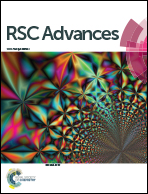C–N bond formation via Cu-catalyzed cross-coupling with boronic acids leading to methyl carbazole-3-carboxylate: synthesis of carbazole alkaloids†‡
Abstract
Copper promoted N-arylation of methyl 4-amino-3-iodobenzoate with boronic acids followed by Pd-catalyzed intramolecular C–H arylation provides an efficient route to methyl carbazole-3-carboxylate derivatives. This methodology was implemented in the synthesis of naturally occurring carbazole alkaloids clausine C, clausine H, clausine L, clausenalene, glycozoline, glycozolidine, glycozolidal and sansoakamine.


 Please wait while we load your content...
Please wait while we load your content...